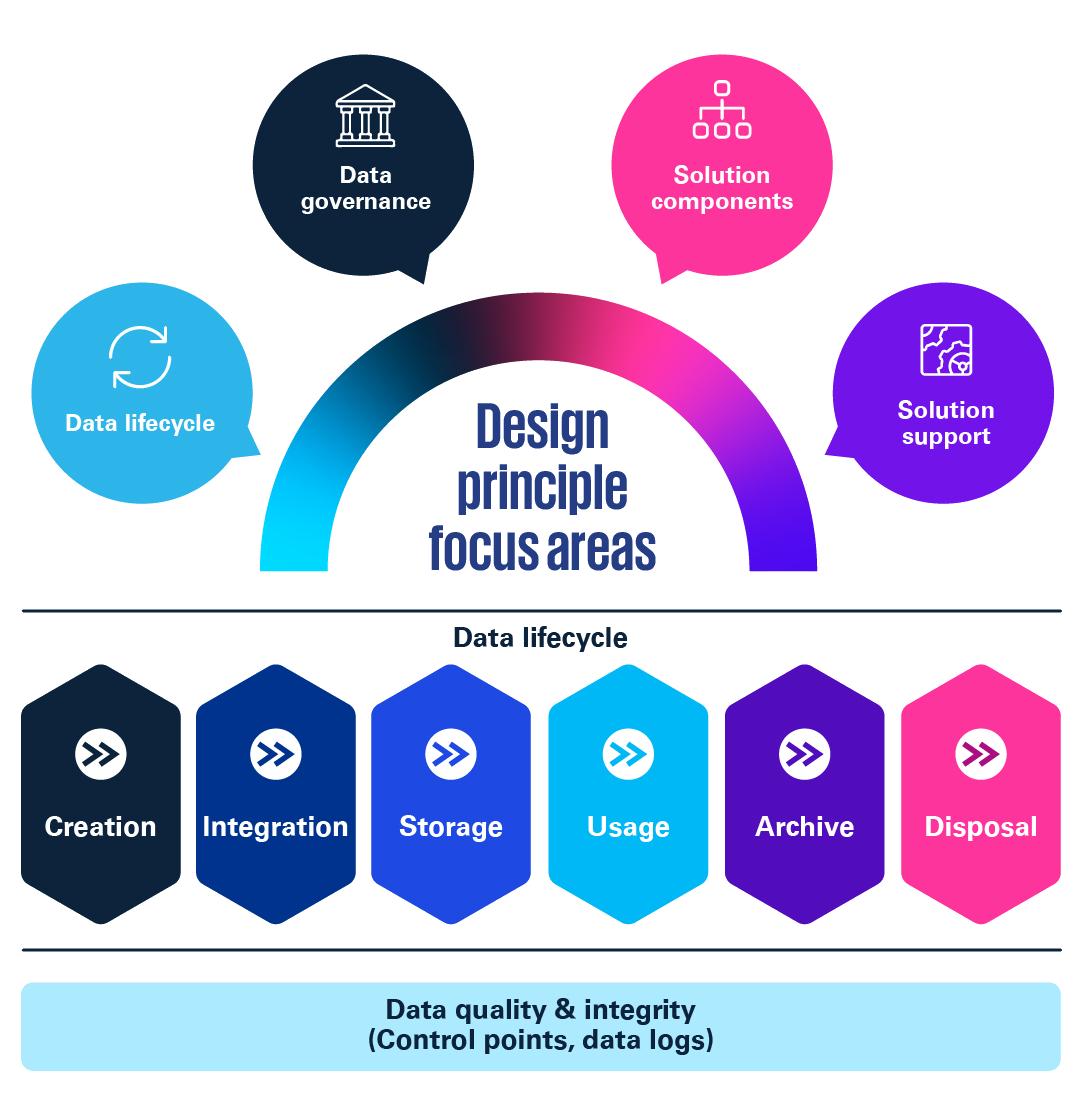
8 minute read
Assess Your Analytics Maturity
from Bell - March 2023
Learn more that they are able to leverage these new technologies and provide services in more sophisticated forms. The dynamic balance between the transformation of processes and that of people is a delicate and everpresent one. These are not just changes that take their aim at possibilities with the potential to transpire weeks and months into the future, but incremental shifts that have a fundamental effect on the dayto-day workings within the organisation itself, with the potential to transform organisational processes as a whole. The Finance organisation therefore realises that this transformation starts with people and people engagement.

“It's really important that the entire CoE engages in the transformational vision, and that all those involved share the same beliefs,” establishes Nantes Kirsten, Director of Financial Analytics & AI, Centre of Excellence.
“I realised early on in my career, as a quantitative risk-management consultant –that I enjoyed data science and the ability to translate data into actionable decisions and insights, and that's when I decided to move into telecommunications where there's an abundance of data and untapped insights.
At Bell, as the Director of Finance and Analytics at the CoE, we are trying to help use data to enable transformation and drive better insights – and there are so many others in the team that share this alignment between what we enjoy and the work we get to do,” he says.
The Financial Analytics CoE is focused on the finance 2025 transformation program data and analytics delivery, seeking to complete its transformation in the next few years; a transformation that will reshape Bell Finance from the bottom up and inevitably evolve the organisation closer to the Finance of the Future.
“I lead the financial data development team,” explains Kirsten, “alongside the solutions development teams that focus on visualisation, reporting automation, and financial data science initiatives like intelligent forecasting; we're currently focused on using the data and technology work-stream within finance 2025 to enable the transformation.”
Asked about the genesis of such a program, MacEwen says: “A program like this starts with leadership support and commitment. We had crucial and very strong support from our senior leadership team, starting with our CFO all the way through to the actual investment in the Program as well as in bringing people together to provide a different way of working for our finance function.”
Beginning with leadership sponsorship, one of the first things they did in the early phases was to focus on people and to find those within their finance function in possession of leading edge skills in some of these technologies and to bring them together, “and that really formed the nucleus of our centre of excellence”.
“As we gathered those folks, along with some of the work that they were doing, into a single team, we started to build a team vision – and to create a roadmap that we then started to execute as a part of our longer-term strategy.”
The Centre of Excellence’s core capabilities
The CoE acts as the brain as well as the executive centre of the finance transformation’s nervous system at Bell, and there are core capabilities and skills that determine how effective it is in bringing about this transformation.
Kirsten proposes that they are categorised broadly in two areas: “There are behavioural capabilities and technical capabilities that are required.”
“On the behavioural side, for any centre of excellence, you need to have an innovative, strategic and critical thinking cap on. It ensures that we keep driving our transformation mandate, but also helps keep our lives interesting. Also on the behavioural side is solid engagement and stakeholder management capability. It's critical that we have a strong stakeholder engagement capability in the CoE so that we continue to keep our finance partners involved, engaged, testing and adopting the solution, and of course, collaboration is absolutely key.”
“On the technical side (and I don't think this will come as a surprise), you need to have an intimate understanding of the finance organisation. As we're a finance CoE, this is different from what you would see in other enterprises – typically as a Centre of Excellence with an analytics focus. You naturally need the technical Data mining / Wrangling and Visualisation competence, but the solution development is crisper with a good foundational finance understanding.“
“Finally, it’s important that we are technology agnostic. We should be able to pick up a technology, learn how to code in it, use it, and to make sure that our solutions can be developed in any technology, any coding language and focus more on driving value through the use case, not leading with technology.”
The central data design and architecture principles for the Centre of Excellence In terms of core data design and architecture principles, the Bell Finance CoE began

NANTES KIRSTEN DIRECTOR OF FINANCIAL ANALYTICS COE, BELL
the transformation journey with a keen understanding that the solution component (that is, the use case) was going to be the driving force at the helm.
“Pick an impactful use case and find the data that unlocks it,” says Kirsten. “And that's one of the principles to which we adhere: find something that’s tangible to our clients and that adds value and then make sure we have centralised data that reconciles with upstream accounting systems that can enable development and automation of that use case.”
The other core aspect that they wanted to retain while reaching their transformation goal was “to develop principles that give us a blueprint, to be able to repeat what we've done”.
The use case would then lead to repeatable principles and processes, (“recipes”) for the Data Development Lifecycle, and then to solid Data Governance around the solutions and lifecycle.
So, in terms of the data lifecycle, Bell Finance wants to make sure that they have core principles in place to answer the data lifecycle questions, for example how they gather requirements, how they develop and how they engage and train their finance users.
“‘How do we start experimenting and have those data lifecycle components at the core of our CoE initiatives?’ – these were all part and parcel of the principles that we needed to put in place. Then there are support considerations, such as the finance support for the end-users, so we needed to make sure that we had a process in place for them to ask someone for help. We need our CoE as their first-line of support.
“At the core of all of this is easily accessible, curated and centralised data.” For such a transformation, then, the Centre of Excellence was necessary. This Centre of Excellence then had to be formed with systems in place that would sustain it –so that it could then go about forming the transformational process that would feedback into its own operations, like an organisational form of M.C Escher’s ‘drawing hands’.
Essentially, the point is that the systems in place are open-ended and ever-adaptive to change – a necessary requirement for an effective transformation to take place. But, of course, such a program is no easy feat, to say the least. As part of the CoE, both MacEwen and Kirsten acknowledge that, early on, one of the challenges that arose stemmed from attempting to tackle too much at once and “biting off more than we could chew”, which they both emphasise.

MacEwen says: “One of the things that we learned was to take a more agile approach and to work on smaller developments that we iterate on – and then to build out from there – versus trying to do more big-bang developments from the outset.”
Kirsten adds: “And you should never underestimate the amount of time testing and training of users will take. The endusers sitting in the finance organisation are so critical to adoption,” – (the crucial user- adoption aspect of the transformation)
– “so you want to make sure that they're bought in and brought in from an early stage and that you allow sufficient time in your program plan for that piece.”
He also underlines that finding the right people – those that are passionate about finance, data and analytics, but also about the vision and practicalities of organisational transformation – is key and that, with such a transformation, “it’s critical to choose the right technology and advisors (internally as well as externally) to ensure that your vision is in-line with best practices in the industry and with best in class companies are doing so that, from a solution development and technology point of view, you're not finding yourself on an island.”
The partner ecosystem
Beyond senior support and the obvious financial investment needed in bringing about such a transformation, partners are invariably vital to such a process.
For their finance transformation, a blend of a strategic-advisory type of partner, as well as technology partners were needed.
“Ultimately,” says MacEwen, “we were looking for partners with a proven trackrecord and experience in the field that had demonstrated capabilities in being able to deliver some of the specific work streams on a roadmap – be it around data or new capabilities with reporting or forecasting – as well as wanting to make sure that they were involved from a technology perspective.”
“We also have a core engine of subjectmatter experts that are helping to deliver a lot of the more technical elements of our finance transformation program. A big part of our strategy, though, is to try to scale up as quickly as possible by leveraging the full breadth of our finance function – and this is a great way to help ensure that we overcome some of those change-management and adoption issues that an organisation can encounter during such a transformation.”
In terms of technology capabilities and partners, Kirsten adds: “And just as ease of use is important, the next consideration is ease of integration.”
“In terms of this side of things, we wanted to pick technology that can speak to –and pull information from – our source accounting systems, which host critical financial information that we don't share enterprise-wide, as it contains sensitive information relating to our corporate financial reporting. The technology needs to support that vision, but also have native documentation and metadata capability.
“In other words, whether developed by the finance users, or within the CoE - we need to be able to document what has been developed so that we don't build solutions in a vacuum and just hand it over to finance, or they build solutions and create critical resource risks.
“We also wanted to make sure that the solution isn't just a desktop technology and that you can productionise the workflows that you build onto a server environment – which, again, removes the critical resource risk.
“As you go through this, I think it's clear that Alteryx was one of those technologies that really supported our transformation journey; therefore, given the criteria, utilising them was a no-brainer as part of our technology kit to enable automation.”
Orienting to the future
Kirsten says that Bell Finance have completed some of their more foundational development, specifically around their finance-governed data warehouse, but adds that it's an evolution. Now, they’re scaling new capabilities with visualisation and reporting, trying to develop crosscompany insights and analytics for their finance community, as well as starting to look to ML and AI to build new capabilities with intelligent forecasting and analytical process automation.
“We're in an accelerated development phase of being able to leverage these new capabilities,” Kirsten says, “where it's now become real for our finance function, and we're seeing the benefits. We're continuing to grow from that foundation that we’ve built, and scaling the solution is the most important piece over the next 18 months.”
MacEwen adds: “The telecommunications industry is currently going through a rapid transformation. When you think about new services emerging in the marketplace, with things like the launch of 5G, the Internet of Things (IoT), Multi-Access Edge Computing (MEC) and Cloud – these are all new types of services that telecoms globally are launching and trying to take advantage of.
“This is going to bring new and interesting ways for the finance organisation to analyse data and provide insights, bringing new capabilities along the way. We think there's going to be lots of interesting ways for our industry to monetise these emerging services, and finance will play an important role in that process.”



